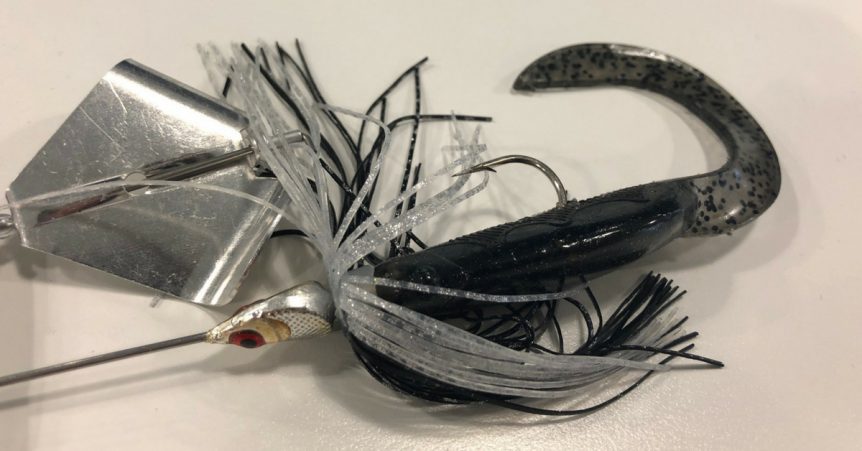Buzz Bait Fishing: Modifications To Up Your Buzz Bait Catches
A buzz bait tweak here to make a squeak there. Changing blades for a higher ride. Bending wires to make a low rider.
These are some of the tricks you can use to create a better buzz bait. Although lure manufacturers have added some of these modifications through the years, you can still tinker with buzz baits to improve their effectiveness in various bass fishing situations. For instance, try removing the blade of a 3/8-ounce buzz bait and replacing it with a blade from a 1/2-ounce model to make the lure stay on top better at slower retrieve speeds.
Buzz bait modifications depend on the time of year and weather and water conditions. During the spring, you can use a smaller, subtle buzz bait, which requires fewer modifications. When fishing clear water on calm days, you might switch to a smaller blade on your buzz bait or bend the wire to make the lure ride differently on the surface.
The heat of summer and the cooling water in the fall are the best times to tinker with buzz baits. During these seasons, bass become more aggressive so you can tempt these fish with souped-up noisy buzz baits.
Exchanging Buzz Bait Blades
Source: Worthco
Switching blades allows you to adapt your buzzer to any changes in conditions you encounter. It’s easy to change a buzz bait blade because a lot of companies have a 90-degree bend at the end of the blade arm. Straightening the bend with a pair of pliers allows you to remove the old blade. After attaching the new blade, bend the wire back to its original position.
If you want your lure to fall slower, switch to a larger blade on your buzzer. Convert your lure into a quieter buzz bait by replacing the original blade with a smaller one.
Replacing the original blade with others composed of different metals create a unique sounding buzz bait. Try anodized aluminum blades to create a lot more squeal.
Wire Bending Your Buzz Bait
Tinkering with the buzz bait’s wire generates different sounds as well. You can bend the wire close to the lure’s head to make the blade clack or pinch it down closer to the lure’s arm so the blade ticks against it.
In open water situations, you can bend down the buzz bait’s lower arm to make the body run deeper. That way bass don’t have to come so far to the surface to get the buzzer.
Roughing Up A Buzz Bait’s Rivets
You can also dabble with buzz bait components to create a squeaky buzzer. One of the most alluring sounds for bass is generated from the area where the buzz bait’s blade touches the rivet. When the blade comes through the water it gets pushed back against the rear rivet. If the edges of the top of the rivet and the bottom of the blades are rough, then a lot of times that really enhances the noise. You can tune your buzz bait by filing uneven edges into the rivet and the blade.
The constant spinning of the blade on the rivet eventually creates grooves in the components causing the parts to squeak. So try to wear a buzzer down before you actually start using it. While driving to the lake, speed up the wearing down process by hanging a buzz bait out of your vehicle’s window so it spins at high rpms for a long time.
Mashing down the rivet on the lure’s shaft with a pair of pliers also generates more squeak. That way the rivet can’t spin on the shaft so when it sits there you get a lot more squeak out of the blades.
Adding Hooks And Trailers To Your Buzz Bait
Buzz baits are notorious for drawing short strikes from bass, but you can counter that problem with additions to improve your chances of landing fish. Attach a 6-inch plastic lizard or 5-inch Fluke-style plastic jerkbait to your buzz bait, which increases the buzzer’s action and draws vicious strike. You would think bass would want a smaller bait when they short strike a buzzer but a lot of times the fish will eat it better if you put a big trailer on the back.
Trailer hooks also improve a buzzer’s hook-setting capabilities. A small single hook trailer will stick most short-striking bass. After placing surgical tubing over the eye of the trailer hook, insert the lure’s hook into the tubing past the hook’s barb. This setup keeps the trailer hook in a straight line with the lure and prevents it from swinging freely to minimize hang-ups.
You can also use a 1/0 treble hook as a trailer, but cut off one of the trebles before placing the surgical tubing over the hook’s eye. Then attach the trailer to the lure’s hook with the two remaining hooks of the treble riding upward for better hookups.
Are You Missing Out?
 With a Mystery Tackle Box Subscription, you’ll get a box jam packed full of baits, including limited edition baits not available anywhere else in America! You’ll also receive access to tips from our experts, how to videos, and more! With baits up to 40% off retail, this is one service every angler needs to try!
With a Mystery Tackle Box Subscription, you’ll get a box jam packed full of baits, including limited edition baits not available anywhere else in America! You’ll also receive access to tips from our experts, how to videos, and more! With baits up to 40% off retail, this is one service every angler needs to try!



